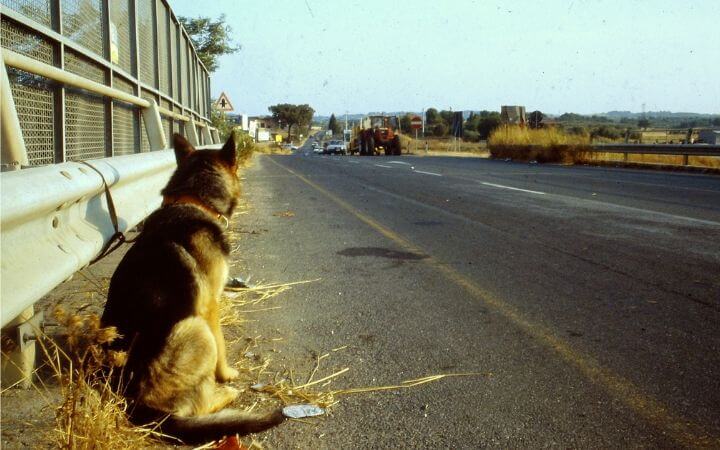In addition to being disgusting in and of itself, animal abuse frequently serves as a prelude to violence against both people and children.
It is your moral obligation to notify local law enforcement or the person in charge of cruelty investigations in your community if you see any abuse, neglect, or cruelty committed against an animal.
If you are afraid about retaliation, you can usually do it anonymously. Animals in need cannot be helped by doing nothing.

11 Warning Signs of Animal Cruelty—and How You Can Help
Animal cruelty often happens in silence and secrecy. Learning to recognize the signs can save lives. If you notice any of the following, don’t hesitate to report it to your local animal control or law enforcement agency.
1. Poor Physical Condition or Visible Injuries
The animal appears severely neglected—matted, dirty, and possibly infested with fleas or ticks. You may see:
-
Open wounds or untreated injuries
-
Bones visibly sticking out due to extreme thinness
-
Limping or total inability to walk
-
Infected eyes, ears, or skin
These animals are in urgent need of medical attention.
2. No Access to Food or Water
The animal consistently lacks clean water and food. It may appear:
-
Aggressive or anxious from hunger
-
Extremely lethargic or unresponsive
Animals, just like humans, can’t survive without basic sustenance.
3. Exposure to Harsh Weather
If an animal is constantly outdoors in extreme heat, cold, or storms without proper shelter, this is considered neglect. In many states, leaving an animal in a hot car is a criminal offense.
4. Filthy or Dangerous Living Conditions
The animal’s space is filled with:
-
Feces or waste
-
Trash, broken glass, or other hazards
Unclean environments can cause serious health issues.
5. Signs of Abandonment
The animal has been left behind in an empty home, yard, or building. Warning signs include:
-
No human activity or caretaker present
-
Dogs howling or barking for extended periods
-
Windows covered or doors boarded up
👉 It’s illegal in all 50 states to abandon an animal.
6. Tethered or Caged Without Movement
Animals confined to small spaces or chains without the ability to:
-
Stand up
-
Turn around
-
Move freely
This form of confinement is both cruel and often illegal.
7. Chains or Infected Collars
Chains or padlocks around the neck can:
-
Cause deep wounds or infections
-
Become embedded in the skin
Chaining is illegal in many states and always inhumane.
8. Signs of Animal Fighting
Some animals are forced into fighting rings, often using:
-
Training tools like treadmills or bite poles
-
Signs of trauma like missing ears or open wounds
Fighting is not only cruel—it’s also a felony in most states.
9. Abnormal or Fearful Behavior
Animals subjected to abuse often show psychological signs such as:
-
Extreme aggression or fearfulness
-
Cowering or hiding, especially around people
Behavioral issues can indicate long-term suffering.
10. Overcrowding
Too many animals in one place may signal hoarding, a serious form of neglect. Victims of hoarding often:
-
Live in filthy, overcrowded conditions
-
Lack proper care, food, and medical attention
An estimated 250,000 animals suffer from hoarding situations every year.
11. Visible Acts of Violence
If you witness someone:
-
Hitting, kicking, or throwing objects at an animal
-
Screaming threats or showing aggression toward the animal
Take action immediately. Public abuse often masks worse behavior behind closed doors.
📣 What You Can Do
-
Document what you see (photos, dates, locations).
-
Contact animal control or your local humane society.
-
Remain calm and never confront the abuser directly.
🧡 Animals can’t speak—but you can.
By staying informed and alert, you can be their voice.
